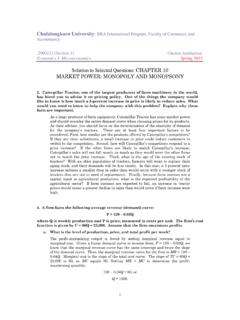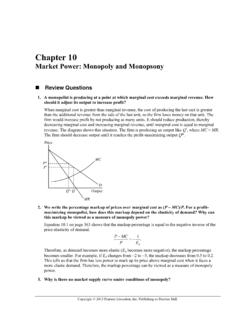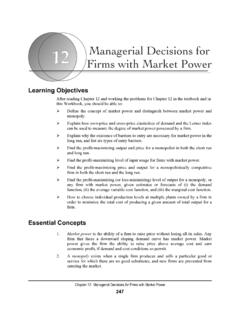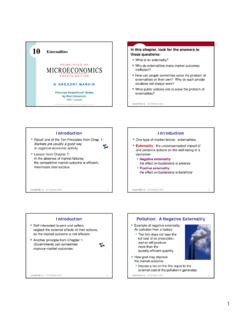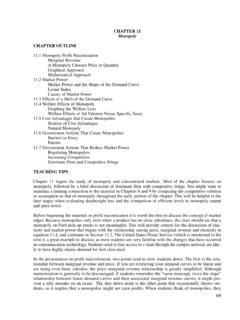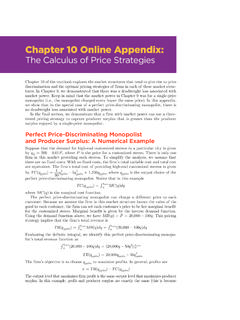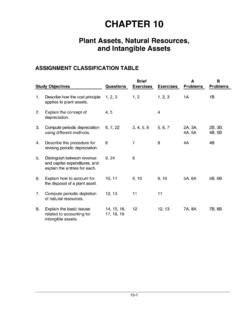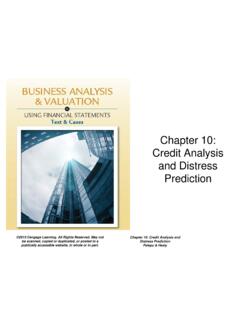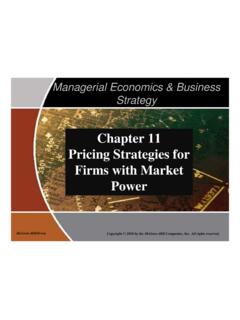Transcription of chapter 9 Pharmaceutical pricing policy - WHO
1 chapter 9 Pharmaceutical pricing policySummary The theory of determining prices and supply Elasticity of prices The reality of competition in a market -based economy failure market Economic characteristics of pharmaceuticals medicines Generic medicines Branded off-patent medicines Variable pricing for medicines pricing by the Pharmaceutical company Differential pricing caused by supply chain Monitoring medicine prices by performing price comparisons related to price comparisons The WHO/HAI methodology for monitoring medicine Obtaining value in Pharmaceutical markets: buyer strategies the circumstances Monitor prices Analyze pharmaco-economics Maximize buying power Negotiate Government intervention in the Pharmaceutical market controls on the manufacturer Profit controls on the manufacturer Reference pricing and brand premiums Comparative pricing controls (international benchmarking)
2 Eliminating tariffs and taxes Fixed margins Digressive markups Capitation Influence of globalization on Pharmaceutical prices Conclusion and further readings guide 9-1 market structures for buyers and sellers 9-2 The effect of generic competition on the prices of antiretrovirals in Brazil 9-1 Median price paid by low- and middle-income countries for selected first-line antiretroviral formulations, 2005 and 2009 9-1 Factors that influence elasticity of demand 9-2 International Drug Price Indicator Guide studiesCS 9-1 Lack of transparency in medicine markets in New Zealand 9-2 Australia s Pharmaceutical benefits scheme 9-3 Examples of supply chain markups: Malaysia 9-4 Measuring medicine value: WHO/HAI survey methodology to compare prices and affordability in multiple countries I: policy and economic issuesPart II: Pharmaceutical managementPart III: Management support systemsPolicy and legal frameworkFinancing and sustainability 9 Pharmaceutical pricing policy10 Economics for Pharmaceutical management11 Pharmaceutical financing strategies12 Pharmaceutical benefits in insurance programs13 Revolving drug funds and user fees14 Global and donor financing15 Pharmaceutical donationscopyright management sciences for health FINANCING ANd The theory of determining pricesThe history of economics, and therefore much of economic thought, is dominated by discussion of the theory of prices and how they are determined.
3 This theory is underscored by the behavior of market participants buyers and sellers. As noted in chapter 10, a scarcity of resources requires that buyers and sellers make choices about how resources will be used, whereas abundance allows limitless production and consumption. However, resources are always limited, and using a resource in one way means it is no longer available for alternative competitive markets, producers need to decide, for a given amount of resources, what and how much to produce, while consumers, with a given amount of income, need to choose what and how much they will buy. Producers and consumers come together in the marketplace, and under certain assumptions, their interaction determines market and supplydemand is generated by consumers, while the supply is provided by producers.
4 Critical to the theory is an under-In a market economy, the interaction of producers and consumers determines the price of goods and services. understanding the theory of supply and demand helps explain how prices are determined, and this theory also explains how responsive (elastic) both supply and demand are to changes in price. For example, medicines that are not considered essential and that the buyer could credibly refuse to purchase will have more elastic prices, whereas the prices of medicines that are considered essential and that the buyer must obtain will be inelastic, meaning buyers will be less sensitive to higher that interfere with the ability of the market to effi-ciently produce and allocate goods and services are said to result in market failure. An example of market failure is when buyers do not have the same level of knowledge; for example, some buyers might pay more than others for the same medicines because they are unaware of what everyone else is buyers or sellers have market power (monopoly or monopsony), they can distort how the market price mechanism works.
5 For example, in absolute monopolies (one seller) and oligopolies (a few sellers), the seller has significant ability to set prices, because the consumer has limited choices. This distortion allows the seller to com-mand a price that is higher than would have prevailed under more competitive situations. In a monopsony, where the government has market power as the only large buyer in the market , the government acts on behalf of consumers to obtain better addition to these economic theories of price determi-nation, prices for medicines are influenced by the fact that medicines have certain traits that set them apart from other consumer products. For example, consum-ers need expert advice to make rational choices between using and not using a medicine and about what kind of medicine to use. This advice is provided by prescrib-ers, who may not know or even care about the price of medicines.
6 Medicines also serve as an investment in future health, which may be difficult for the consumer to value. The literature unanimously concludes that medicine price differences exist between countries, even when comparing between or within the strata of industrial-ized, middle-, and low-income countries. Price variation within countries is more likely in less price-regulated markets, such as the united States; however, prices vary in other countries, where public, private, and non-governmental (not-for-profit) sectors procure medicines separately. Variable prices for medicines within and between countries often result from The Pharmaceutical manufacturer selling the same product for different prices Intra- and intercountry differences in the margins charged in the postmanufacturing supply chain by wholesalers, distributors, and pharmacists, as well as taxes and co-payments levied by the stateConducting Pharmaceutical price comparisons is chal-lenging, but such assessments can identify price varia-tions and provide valuable information on their source and on interventions that can help reduce medicine prices.
7 For example, margins and taxes charged along the Pharmaceutical supply chain can add significantly to the final price of medicines; however, governments can control these markups by enacting price-control poli-cies and eliminating tariffs and taxes. In addition, buyers of pharmaceuticals should assess their own position in the marketplace and use tactics such as price negotia-tions, pooled procurement, and information sharing to increase their market 9 / Pharmaceutical pricing policy of what drives each group, because consumers and producers are not driven by the same : market theory places the consumer in the lead role for determining what will be produced. Consumers want to maximize their welfare through the total bundle of goods and services they buy with their income. The bundles of goods that consumers choose to buy at given prices tell producers what to produce.
8 In theory, consumers make rational choices as to what is included in the bundle of goods; however, nothing in the theory suggests that these preferences are equitable or socially desirable, only that they represent choices. Prices of complementary products or substitute products affect demand, as does the number of consumers in the market and their desire for exam-ple, if a consumer prefers to buy a branded medicine over a generic and is willing to pay more. Associated with the role of creating demand is the consumer s ability to vote with money on what will be produced. Therefore, indi-viduals with greater income have proportionally more votes (Bannock et al. 1984).Supply: Producers want to maximize their profit. Profits are determined by the cost of production and the firm s total revenue (or sales).
9 To maximize profit, the seller has an incentive to use resources in the production process in the least costly way. In a perfectly competitive marketplace, firms receive normal profits ; that is, they cover the cost of all production costs plus the minimum return required to keep them in business. If the firms returns were greater than this minimum, new firms would be encouraged to enter the market , and the competition would drive profits downward until normal profits were reached. If the returns were less than the minimum, low profitability would encourage firms to leave the market , raising the profits of the remaining busi-nesses until they achieved normal profits. Other factors that affect the supply curve include the number of producers, which increases competition; technology, which can initially represent a cost to the producer but ultimately increases effi-ciency; and the cost of of prices The intersection of supply and demand provides the tool for understanding price determination.
10 However, a further aspect of supply and demand helps explain behavior, that is, how responsive each is to changes in of demand: On the demand side, if consum-ers really need a product to the extent that a significant price increase has little effect on the quantity demanded, demand is nonresponsive to price and is said to be price inelastic. The reverse situation is where demand is very responsive to price, such that a slight rise in price causes a proportionally larger fall in demand. Pharmaceutical demand varies across countries. It is also relatively income inelastic, meaning that a person s income affects pharma-ceutical purchases less than other factors (OECd 2008). The four determinants of price elasticity of demand are substitutability, proportion of income committed to the purchase, whether the item is a luxury or a necessity, and market timing (see Box 9-1).










